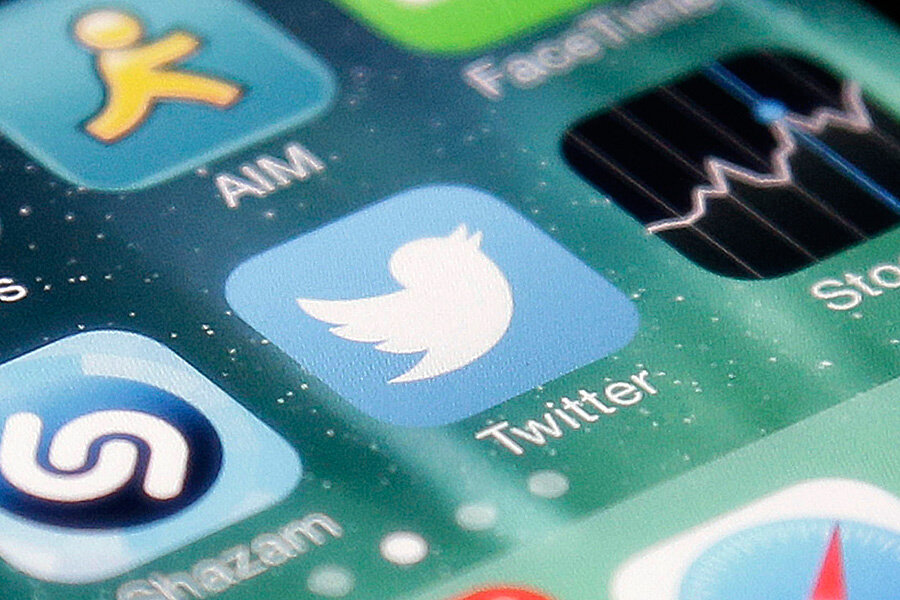After the exit of its CEO, how can Twitter get its wings back?
Loading...
| New York
The Pope is on Twitter, along with the Dalai Lama, world leaders and, of course, Kim Kardashian.
The short-messaging service can bring fleeting fame, instant ignominy and get you fired. It has been credited for sparking revolutions and, like Facebook, transforming the way the world communicates.
But despite the buzz generated by thousands of chatty journalists, athletes and celebrities, Twitter has never turned a profit. Its user base of 302 million is dwarfed by rivals such as Facebook, which counts 1.44 billion.
Facebook has grown into an Internet powerhouse, while Twitter in many aspects remains a niche social network, unable to convince the masses that they need its service to keep up with what's happening in the world. Lots of people sign up but not a lot stick around.
That likely had much to do with last week's announced exit of Twitter Inc. CEO Dick Costolo, who gave way to co-founder, and former CEO, Jack Dorsey while the San Francisco company looks for a new leader.
Despite the executive turmoil and a stock price that has fallen 30 percent since late April, industry experts — not to mention loyal users — see potential in the company.
But first it needs to address some of its biggest problems. Here are some of Twitter's most pressing challenges, along with possible fixes.
Where are the users?
Its user growth is stalling and there are a lot of competitors. Besides its old rival Facebook, Twitter is feeling the heat from mobile messaging apps such as WhatsApp, Line and Viber, not to mention Snapchat, Instagram and a bevy of others only your cool middle-school niece might have heard of. Twitter grew from 204 million active users in the first quarter of 2013, to 255 million a year later and 302 million in the first three months of 2015. In comparison, Facebook-owned WhatsApp announced in April that it has reached 800 million monthly active users.
Make it easier to use
Almost one billion users have tried Twitter and not stuck around, according to tech investor Chris Sacca, a longtime Twitter backer who wrote a lengthy critique of the service and posted it online this month. Sacca suggested the service could offer more features to engage visitors — including special channels or tabs focused on live events, topics of interest or even a user's geographic location. He also recommended more "nudges," including feedback, polls and other interactive features that would make newcomers feel less "lonely."
Deal with trolls
Twitter has long had a problem with trolls, the online bullies and blowhards whose abuse has been an ongoing issue that has alienated established and potential users. It has tried to make it easier to report threats and in April updated its policy against violent threats to include not just specific threats but people promoting violence against others. It's too early to say if this has helped.
More apps and options
Twitter is well-known around the globe, but it must do more to capitalize on its own brand, said Brian Blau, a tech analyst at the Gartner research firm. Twitter could be offering users more specialized apps for various activities, in the way that Facebook has built a stable of apps for messaging, consuming news and sharing photos, he said. Twitter's Periscope app, which lets users share live video, is an example of "exactly the kind of thing Twitter should be doing," Blau added. But he noted that Facebook, Snapchat and other companies have invested heavily in direct-messaging capabilities, which can make money by showing ads, selling animated adornments or enabling users to play one-on-one games. Twitter, meanwhile, has only tinkered around the edges of its direct-messaging function.
Demonstrate strengths to advertisers
Twitter knows something about its users' interests, but Facebook knows far more about its users' likes and habits, while Google and Pinterest can more readily predict what users might want to buy. That, coupled with Twitter's slowing user growth, has made advertisers are more likely to spend their money on other sites, analysts say. Twitter's strength, however, is drawing people's attention during live events, such as sports championships, breaking news and popular television shows, said Debra Aho Williamson at the eMarketer research firm. Reaching casual users on a routine basis is harder, but Twitter may succeed if it can "engage advertisers in that 'real-time' story," she said.
Show investors it's serious about business
The new CEO must show Wall Street that Twitter is focused on building revenue and delivering on financial targets, added Scott Kessler, a tech stocks analyst at S&P Capital IQ. "Their single biggest shortcoming is really about the ability to consistently communicate and execute against their strategy," he said.





